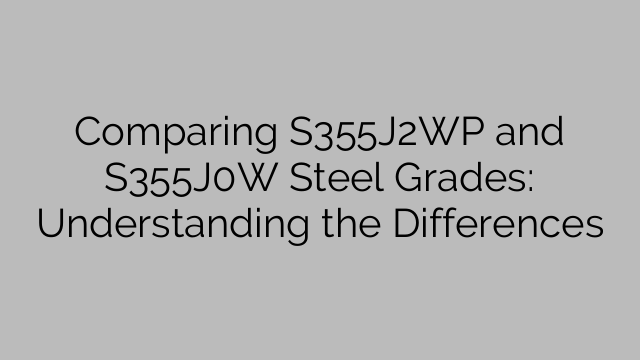When it comes to working with steel, it is essential to understand the different steel grades available in the market and their characteristics. This knowledge helps professionals choose the most suitable grade for the specific application, ensuring optimal results and durability. In this article, we will compare two popular steel grades – S355J2WP and S355J0W – and understand their differences.
Firstly, let’s familiarize ourselves with the basic properties of these steel grades. Both S355J2WP and S355J0W belong to the EN 10025-5 standard, which specifies the technical delivery conditions for structural steels with improved atmospheric corrosion resistance. These grades are designed to withstand harsh outdoor conditions and offer superior corrosion resistance compared to standard structural steels.
The main difference between S355J2WP and S355J0W lies in their chemical composition. S355J2WP contains higher levels of phosphorus, copper, and chromium, making it more resistant to corrosion in various atmospheric environments. Copper, in particular, acts as a natural barrier against corrosion, forming a protective patina when exposed to moisture and oxygen. On the other hand, S355J0W has a lower phosphorus content and lacks the addition of copper and chromium, which reduces its corrosion resistance.
In terms of mechanical properties, both grades exhibit similar characteristics. They have a minimum yield strength of 355 MPa (megapascals) and a minimum tensile strength of 510-680 MPa, providing adequate strength for structural applications. Additionally, these grades offer good weldability, forming, and machining properties, allowing for easy fabrication and construction.
When it comes to applications, S355J2WP is widely used in structures exposed to aggressive atmospheric conditions such as bridges, buildings, and facades. Its enhanced corrosion resistance makes it suitable for environments with high humidity, salt-laden air, and industrial pollutants. On the other hand, S355J0W, although slightly less resistant, is still suitable for less aggressive outdoor environments, such as garden architecture, outdoor sculptures, and decorative structures.
It is important to note that both grades require appropriate maintenance and protective coatings to maximize their lifespan. Proper surface preparation, regular inspections, and repairs are necessary to ensure long-term corrosion protection.
In conclusion, comparing S355J2WP and S355J0W steel grades highlights their differences in chemical composition and corrosion resistance. While S355J2WP offers higher resistance to atmospheric corrosion, S355J0W provides adequate protection for less aggressive environments. Understanding these distinctions helps professionals select the most suitable grade for their application, ensuring longevity and durability in structural projects.

